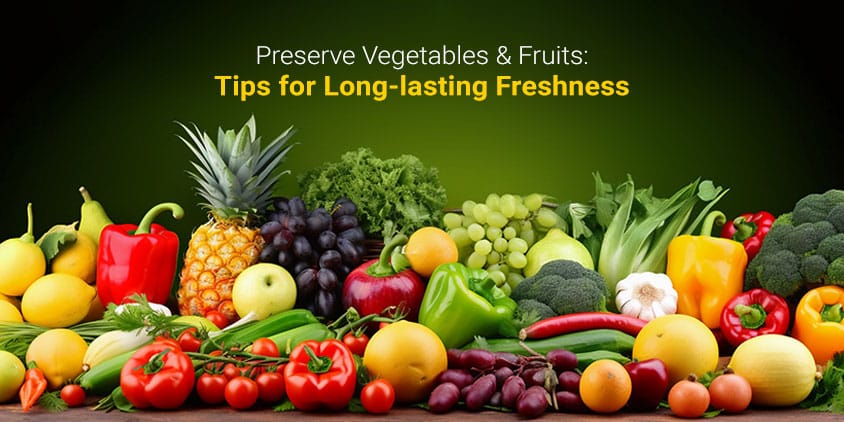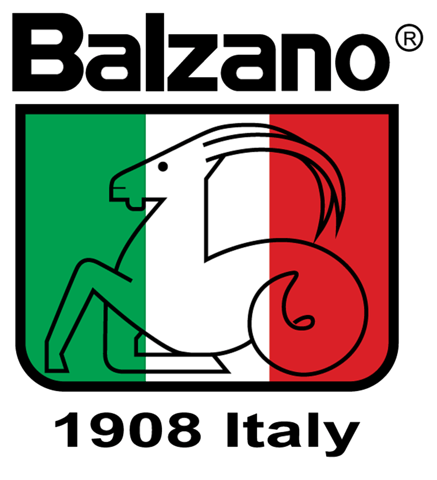PRESERVE VEGETABLES AND FRUITS: TIPS FOR LONG-LASTING FRESHNESS

Fresh vegetables and fruits are not only delicious but also packed with essential nutrients. However, they tend to spoil quickly, which can lead to waste and disappointment. Fortunately, there are various methods you can use to extend the shelf life of your produce. In this blog, we will explore effective ways to preserve your vegetables and fruits, allowing you to enjoy their flavors and benefits for longer periods.
Proper Storage:
One of the fundamental factors in preserving vegetables and fruits is proper storage. Here are some guidelines to follow:
Keep fruits and vegetables separate: Fruits release ethylene gas, which can accelerate the ripening process and spoil nearby vegetables. To avoid this, store fruits and vegetables in separate compartments or containers.
Utilize the refrigerator: Many fruits and vegetables benefit from refrigeration. However, some are sensitive to cold temperatures, so it's important to know which ones to store in the fridge and which ones to keep at room temperature. Leafy greens, berries, and most vegetables can be refrigerated to maintain their freshness.
Ventilation and humidity: Vegetables require high humidity, while fruits prefer lower humidity levels. Use perforated bags or containers with ventilation to maintain the proper humidity for each type of produce.
Canning and Preserving:
Canning and preserving are excellent methods to extend the life of your produce. Here are a few methods to take into account:
Canning: Canning involves placing fruits or vegetables in jars and sealing them to prevent spoilage. The process typically involves heat treatment to destroy microorganisms. Follow reliable canning recipes and procedures to ensure safety and longevity.
Freezing: Freezing is a simple and effective way to preserve fruits and vegetables. Blanch vegetables by immersing them in boiling water for a short time, followed by rapid cooling in ice water. Then, package them in airtight containers or freezer bags, removing as much air as possible. Fruits can be frozen directly without blanching, but it's advisable to remove any pits or seeds and cut them into appropriate sizes.
Drying and Dehydrating:
Drying and dehydrating remove moisture from fruits and vegetables, inhibiting the growth of bacteria, yeast, and mold. Here's how you can do it:
Air drying: Certain fruits, such as apples and citrus slices, can be air-dried by placing them in a well-ventilated area until they lose moisture. Vegetables like herbs can also be air-dried by hanging them upside down in bundles.
Pickling and Fermenting:
Pickling and fermenting are popular methods that not only preserve vegetables but also enhance their flavor. Here's how to get started:
Pickling: Vegetables like cucumbers, carrots, and onions can be preserved by pickling them in a solution of vinegar, water, salt, and sugar. The acidity of the pickling liquid inhibits the growth of spoilage-causing bacteria.
Fermenting: Fermentation involves using beneficial bacteria to preserve vegetables. Sauerkraut and kimchi are excellent examples of fermented vegetables. By submerging vegetables in a brine solution and allowing them to ferment at room temperature, you create an environment where beneficial bacteria thrive.
Vacuum Sealing:
Investing in a vacuum sealer can be a game-changer for preserving your produce. Vacuum sealing removes air from the packaging, significantly slowing down the spoilage process. It helps retain the freshness, flavor, and nutrients of your fruits and vegetables. Vacuum-sealed produce can be stored in the refrigerator or freezer for an extended period.
Using Citric Acid or Ascorbic Acid:
Certain fruits and vegetables tend to oxidize and discolor when exposed to air. You can prevent this by using citric acid or ascorbic acid (vitamin C). Create a solution by dissolving 1 teaspoon of acid in 1 cup of water. Dip sliced fruits or vegetables in this solution for a few minutes before drying, freezing, or canning them. It helps maintain their color and prevents browning.
Blanching:
Blanching is a technique that involves briefly immersing vegetables in boiling water, followed by rapid cooling in ice water. This process helps preserve the color, texture, and nutritional value of vegetables before freezing or canning. Blanching also helps destroy enzymes that can cause the produce to deteriorate over time.
Preserving in Oil or Vinegar:
Preserving vegetables in oil or vinegar is another method to consider. This technique not only prolongs their shelf life but also infuses them with delicious flavors. Vegetables like peppers, artichokes, and sundried tomatoes can be preserved in oil, while cucumbers, onions, and beets can be pickled in vinegar solutions.
Proper Handling and Sorting:
To ensure the longevity of your produce, handle it with care. Avoid bruising or damaging fruits and vegetables during harvesting, transport, and storage. Sort through your produce regularly and remove any damaged or spoiled pieces to prevent them from affecting the rest.
Consider Root Cellaring:
If you have a root cellar or a cool, dark, and well-ventilated space, consider root cellaring certain vegetables like potatoes, carrots, onions, and winter squashes. These conditions mimic the natural environment these vegetables need to stay fresh for longer periods.
Make Use of Preserving Aids:
There are several natural preserving aids you can use to extend the shelf life of your produce. For example, silica gel packets or oxygen absorbers can be placed in storage containers to absorb excess moisture or oxygen, respectively, and inhibit spoilage. Be sure to use food-grade packets and follow the instructions for proper usage.
Preserving your vegetables and fruits allows you to enjoy their freshness, flavors, and nutritional benefits long after their peak ripeness. By following proper storage techniques, exploring canning and preserving methods, and experimenting with drying, pickling, and fermenting, you can significantly extend the shelf life of your produce. Start implementing these preservation techniques, and you'll be amazed at how long your fruits and vegetables remain delicious and enjoyable. Happy preserving!
Leave a Comment
Popular Posts
Est. in 1908 in Italy, Balzano has evolved as a quality brand over last 110+ years. With Italian craftsmanship and Italian design team we wish to fill our customers life with healthy living, style and convenience globally.
MATRIX TRADE CONNECT LLP
Paradise cinema, 1ST Floor, Plot 305, Delta Apt, LJ Road,
Mahim West, Mumbai,
Maharashtra 400016
IN





0 Comment